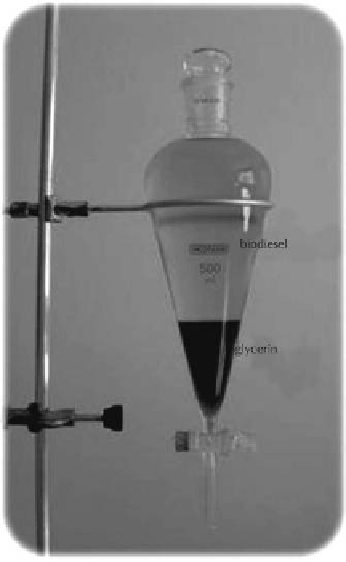Biomedical Engineering Reference
In-Depth Information
Figure 3.
Produced biodiesel and glycerin in laboratory scale (Deboni, 2010).
In this specific context, our group has dedicated great efforts to obtain polymer
materials completely or partially “green” from renewable resources such as the ca-
shew nut shell liquid (CNSL); the glycerol, byproduct of the production of biodiesel
by the transesterification reaction; and the lignin removed by the Kraft process. These
polymers are useful in the environmental recovery which involves the oil spill clean-
up process. In addition, seeking for the raising of the clean up efficiency, magnetic
nanoparticles are incorporated to these polymers, allowing the use of electromagnetic
devices to catch the composite impregnated with petroleum (Lopes et al., 2010; Souza
Jr. et al., 2010 a, b).
maGNetiC BioFoams
Biofoams Production
Magnetic biofoams can be prepared using different contents of water and toluene
diisocyanate. In our experiments, we used the compositions shown in
Table 1
.
The
optical micrographs of the produced biofoams are shown in
Figure 4.
It can be no-
ticed that the sample PU-1 has large pores connected, which presents a most open
aspect. Moreover, it is possible to infer that the sample PU-2 also has large pores,
but one can see that these pores are smaller and posses thicker walls. The increase
of the pore walls becomes more visible as more water is used, as observed in the
sample PU-3.


Search WWH ::

Custom Search